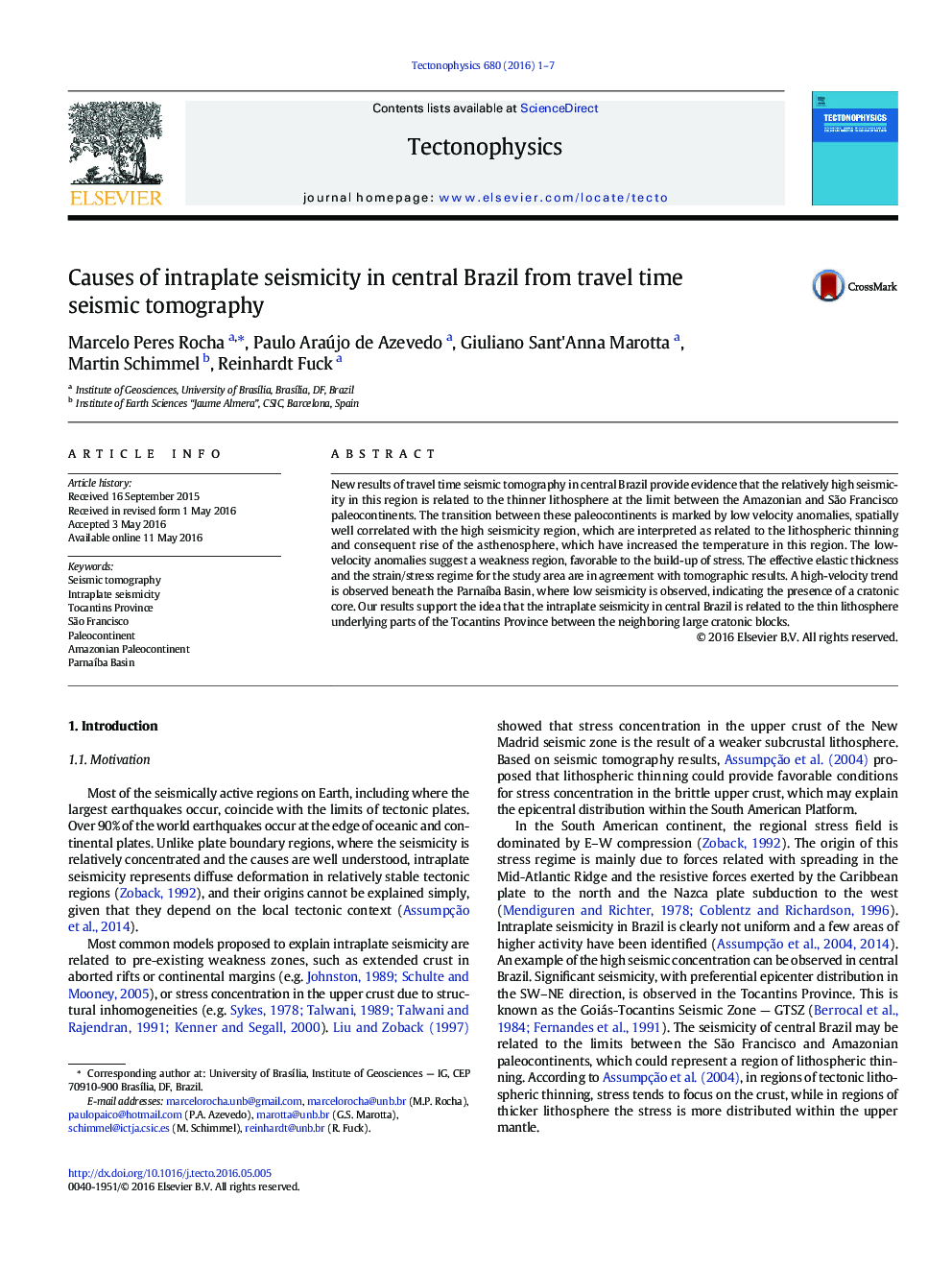| Article ID | Journal | Published Year | Pages | File Type |
|---|---|---|---|---|
| 6433341 | Tectonophysics | 2016 | 7 Pages |
â¢Strong discussion about the causes of the intraplate seismicity in central Brazilâ¢Correlation between high seismicity and seismic tomographic anomalies in central Brazilâ¢Correlation between seismic tomographic anomalies and effective elastic thickness
New results of travel time seismic tomography in central Brazil provide evidence that the relatively high seismicity in this region is related to the thinner lithosphere at the limit between the Amazonian and São Francisco paleocontinents. The transition between these paleocontinents is marked by low velocity anomalies, spatially well correlated with the high seismicity region, which are interpreted as related to the lithospheric thinning and consequent rise of the asthenosphere, which have increased the temperature in this region. The low-velocity anomalies suggest a weakness region, favorable to the build-up of stress. The effective elastic thickness and the strain/stress regime for the study area are in agreement with tomographic results. A high-velocity trend is observed beneath the ParnaÃba Basin, where low seismicity is observed, indicating the presence of a cratonic core. Our results support the idea that the intraplate seismicity in central Brazil is related to the thin lithosphere underlying parts of the Tocantins Province between the neighboring large cratonic blocks.
